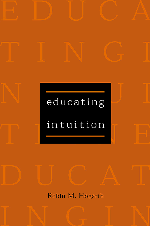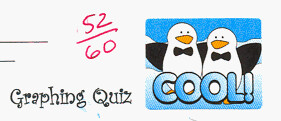
Prof. Ron Aharoni. The local method of teaching is "a colossal failure."
photo by: Adi Mazan
You do the math!
Shocked by the abysmal level of math instruction in the country, a group of math professors is now challenging the Education Ministry and trying to implement the Singapore method.
When Prof. Ron Aharoni of the mathematics department of the Technion - Israel Institute of Technology volunteered to participate in a project to improve math education in Ma'alot-Tarshiha, he never imagined how shocking the experience would be for him. The textbooks used in the first and second grades, he says, described in fact a kind of new math that no one - children, teachers or parents - understood.
"When I came to Ma'alot," says Aharoni, "the teachers explained to me that there are two equivalent approaches to teaching math that compete with one another: the structural approach and the environmental approach. It took me a whole year to realize that it's all a fraud. There is no `environmental math' - there is normal math and there is delusional math, which is unique to Israel. You have to have a distorted mind to invent something like that."
Distorted mind or not, the achievement level of Israeli children in math is low. On an international mathematics test administered in 1999 by Trends in International Mathematics and Science Study (TIMSS), Israeli children placed 28th. In May of this year, TIMSS will once again conduct the test. However, following the deplorable results of last time, the Education Ministry has rolled up its sleeves, and at record speed - over a period of six months instead of years - it has published two new books for the development of quantitative thinking. It then sat seventh- and eighth-grade students down to prepare for the test at full steam.
[snip]
Who is to blame for the fact that Israeli children fell from first place in the same test in 1964 to 28th, 25 years later? The Center for Educational Technology (CET) blames the level of teaching - or, in other words, the teachers. The Ministry of Education believes that perhaps the teaching materials developed by the CET (with the approval of the ministry) are problematic. Mathematicians point an accusing finger at the schools of education, and the educators say that the mathematicians do not know anything about teaching.
[snip]
A few months ago, the Israeli Association for Excellence in Mathematics was established.
[snip]
The rights to the Singaporean book were donated to the organization by entrepreneur David Garbasz, an Israeli-born mathematician who lives in New York.
Why Singapore? "They consistently place first in international competitions," says Garbasz, who wanted to donate the rights to use the texts to the ministry for free, but did not encounter any enthusiasm there for his idea.
[snip]
"The educational establishment is currently controlled by a culture that is known as `New Math,' which has its source in California of the 1960s. It was imported into Israel and since then, has taken over all the learning materials. I see the catastrophe in this system as a father of young children. I open up their textbooks and I cannot understand what they are being taught in school. As the dean of a computer science faculty, I see the results of math instruction done according to this method on the students that come here to study. They lack basic understanding of mathematics, something they didn't learn in grade school."
The method was brought to Israel in the early 1970s by Prof. Pearla Nesher. She returned from Harvard University with a doctorate in education and began to work as a consultant to the Ministry of Education and in CET in the development of new curricula for elementary schools.
Of rods and patterns
The result was a series of math textbooks called "One, Two ... Three" for the first and second grades, which have dominated the educational system ever since. The method used in the books is called the investigational or structural method, at the center of which is use of the celebrated Cuisenaire rods. . "One, Two ... Three" was supposed to create a revolution in thinking. Each rod has a different color and size. Two rods placed side by side are not two. Instead, they represent a particular number, depending on the color and length of the rod. The child reaches the result not using the intuitive method of counting items, as he is used to doing in his natural environment, but rather by means of trial and error. He puts the rods down lengthwise, one after the other, and looks for a pattern that fits them. Their combined length, if it fits exactly into the pattern, is the result.
Those who do not understand will find themselves in the distinguished company of numerous parents, teachers, math professors and, of course, the pupils themselves. The idea is to teach first-grade children to investigate the "pure number." The authors of the book explain in the teacher's guide that the right way to teach math in the lower grades is to disconnect the students from their natural environment and from reality, and to teach them in a pure, clean environment that has nothing to do with prior knowledge. Further along, pupils learn concepts invented by the CET that have no parallel anywhere else in the world, such as Zanavgufim ("Tailbodies"), imaginary creatures that are used to teach the decimal system. [ed: sounds a bit like the Trailblazers fractohopper]
[snip]
"Through the years, I was always concerned by the level of math education in Israel and I sent letters to ministers of education, but I never received an answer. Somehow, I assumed that someone was taking care of the situation and I dropped it. Now that I have retired, I have decided to pitch in." Amir was not satisfied with the level of his students. He felt that the problem was the result of a postmodernist approach to life that undermines education.
"They said that you have to take the students' happiness into account, to understand them, not to pressure them, not to ask, not to demand and not to harass them. No more learning by heart and no more homework. Even so, the standard is not particularly high. In the view of ministers of education, everyone should have a matriculation certificate, and that creates a conflict between excellence and egalitarianism. It is an international trend that is beginning to be reversed today, and is particularly salient in two subjects: reading and math.
"Suddenly you realize that we have an entire generation of illiterates. In mathematical research, Israel is in the absolute third or fourth place, thanks to the previous generation and the immigration from Russia, but down below, the branches are drying up and I don't want to think what will happen in the coming generations."
[snip]
"At a meeting with teachers that we had in the framework of the association, we told them that they would have to learn the new method and to stand in front of the class and teach," he recalls. "It was very difficult for them because in the `One, Two ... Three' method, the teachers don't teach - they hand out work sheets, sit the children down in groups and move among the groups. In this way, for years, a situation was created in which teachers taught less and less and became more and more afraid of math. And suddenly, the same teachers that were afraid are now managing quite well with the new books and are proud to teach. A large proportion of the teachers are really quite happy now."
[snip]
The post-Cuisenaire era is already here, says Weiner: "We have returned to simple, natural things from which basic arithmetic began. The children are finally being taught to reckon. Those who know how to reckon, concentrate on it and discover their intellectual abilities and start thinking."
[snip]
"In recent years, Israel went a little too far to please math teachers," maintains Nevo. "They say the children have to learn by means of investigation and discovery, so that they remain interested and happy. And I say that you have to know the basics, too. The mathematicians say that there is no need to rediscover the multiplication tables each time anew, just to learn them, that there are laws and rules and they have to be learned by heart, too. In my view, the explanation for the failure is that with all the involvement in the method, the message was lost. Now there is a clear message coming from the system - that children must be required to have achievements."
Because of the failure in 1999, voices were heard demanding that Israel stop participating in the TIMSS test.
[snip]
Why did you have to wait 25 years to realize that the system didn't work?
[snip]
Pearla Nesher says that yes, she brought the knowledge from the U.S., but the textbooks in the "One, Two ... Three" series were written in Israel, and were not influenced, she maintains, by what was being done in America. On the contrary: "My doctorate is about the `New Math,' but it is a critique of it," she says. "And the method we developed here was a reaction to the methods used in America."
Apparently, the system was not that good because the students here are having difficulty in math.
Nesher: "The system is intended for elementary schools and they are having difficulty in the upper classes. They know the material for the first grade. They know it. That is not what they are failing at."
[snip]
So why are the mathematicians saying just the opposite?
"It is their right to claim whatever they want and they have the right to disseminate the Singapore program. Mathematicians in the U.S. started the war and our mathematicians are jealous and decided they want a little noise and publicity. The Singapore books are very similar to ours, the same approach, the same structures. Except that they have an economic interest in distributing the Singapore books and those nice mathematicians don't know anything about teaching math. They don't understand it and it is not what they do. If they are now proposing that we get back to basics, then they don't know what is going on in the world. When they suggest going back to teaching the way we taught in the 1960s, when only 9 percent of the students passed the matriculation exams and today 50 percent pass, then they are completely cut off from the world of education."
But at that time, we were No. 1 in the world.
"When only 9 percent do the matriculation exams and only the top classes are tested, then of course we made first place. Twenty-eighth place now is not the right picture either because the students didn't take the tests seriously and didn't prepare. And the sample was not suitable and testers included weak schools as well as the Arab sector, which previously had not been tested. But there are people that wanted to be able to point to a terrible catastrophe so that they can push forward some program that someone has the rights to."
I'm trying to find out exactly what Nesher's program actually is. It sounds like an amalgam of the old New Math with the new new math: highly abstract content (the kids know the commutative property but don't know how to add) teamed with discovery teaching.
I wonder.
Pearla Nesher publications
Learning Numbers: A Linguistic Perspective
Ron Aharoni in American Educator, part 1 (ktm-1)
Aharoni on teaching fractions
Ron Aharoni on the fifth operation of arithmetic
American Educator - math issue - subscription info
What I Learned in Elementary School by Ron Aharoni







